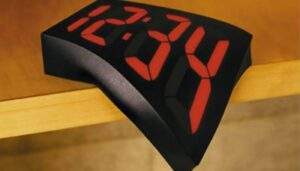Table of Contents
Chapter 13, Social Security, & Luxury Debt: A Case you Must Know
Why Welsh is the greatest Chapter 13 case ever
Every now and then, courts pass down a ruling on a subject that is so practical and a decision so favorable to consumer debtors that it’s as if the heavens opened, angels sang, and cherubim hand-delivered a gift to attorneys far and wide on the wings of a unicorn. The Ninth Circuit’s In re Welsh is such a case.
Introduction
On this, the ten-year anniversary of In re Welsh, 711 F.3d 1120 (9th Cir, 2013), it seems relatively few attorneys know about this ruling, and how it can benefit debtors. Or at least, far fewer bankruptcy lawyers know about this than should. Yet we all should have it tattooed on the inside of our eyelids.
So, with the goal of getting the word out there, and celebrating a decade of relative anonymity, here’s a loud and triumphant commemoration as a monument to one of the greatest debtor cases in bankruptcy jurisprudence, and all of its varied folklore.
The basic facts of the Ninth Circuit’s In re Welsh
Meet David and Sharon Welsh. They filed Chapter 13 bankruptcy in Montana, and intended to pay back some debt. This would be funded with his retirement income of Social Security and pension, and her income as a nurse earning about $7,000 a month.
Because their income was above the median income for their state, they had to complete the longer version of the bankruptcy means test to determine their disposable income per its formula. In doing so, they excluded Mr. Welsh’s Social Security income.
Further, on expenses, they deducted payments for future secured claims, as the means test allows. And not just any secured goods, but luxury and comfort items like two ATVs and a motor home for a $40,000 loan. The debtors were choosing to pay on luxury goods with secured debts, leaving less money for their unsecured debts.

The result? From their combined income of over $8,100 a month, they were left with disposable income of about $225 a month to repay all their unsecured debt over $175,000. You can see where this is headed.
The Chapter 13 trustee objected, claiming the plan wasn’t made in good faith because they lived in a nice home and were making payments on secured luxury goods, resulting in a tiny payment for the unsecured debts.
The bankruptcy court rejected the trustee’s objection after looking at the totality of the circumstances. A divided BAP affirmed the bankruptcy court’s ruling in favor of the debtors. The trustee appealed to the Ninth Circuit Court of Appeals, and this is where the gift begins.
The Ninth Circuit’s Ruling in Welsh
Good faith in Chapter 13 bankruptcy
In its opinion, the 9th Circuit started with a discussion of good faith in Chapter 13 bankruptcy. Section 1325(a)(3) requires good faith, but the Code doesn’t define it. Before BAPCPA in 2005, the courts had a “totality of the circumstances” test for good faith. However, in 2005, Congress provided a detailed formula on how to calculate disposable income for Chapter 13.
The 9th Circuit summed it up this way:
“The debtor begins with his “current monthly income,” which, by definition, explicitly “excludes benefits received under the Social Security Act.” The debtor then subtracts living expenses based on the Internal Revenue Service’s “Collection Financial Standards,” a detailed series of averages for living expenses that the Service uses to calculate necessary expenditures for delinquent taxpayers. The debtor also subtracts his averaged payments to secured creditors due during the following sixty months.” Welsh at 1130.
In providing a calculation of exactly what the debtor should pay in a Chapter 13, Congress removed any uncertainty about debtor’s intentions or good faith. After BAPCPA, the formula was the test.¹ “Congress replaced a case-by-case analysis of disposable income with a rigid, mechanical means test.” Id. at 1131.

Social Security Income in Chapter 13 Bankruptcy
Starting with the issue of Social Security income, the 9th Circuit noted that the “calculation of “disposable income” now incorporates the definition of “current monthly income,” and the definition of “current monthly income” excludes Social Security income.” Id. Joining with the Sixth Circuit in Baud v. Carroll, 634 F.3d 327, 347 (6th Cir.2011)(cert denied), the Ninth Circuit wrote that “this new approach to disposable income is a “`clear indication that Congress intended … a departure’ from any such pre-BAPCPA practice.” Id.
The court then defined “good faith,” post-BAPCPA, as the debtor’s motivation and intentions in seeking relief, citing the factors from In re Leavitt, 171 F.3d 1219 (9th Cir, 1999). “We therefore decline to give greater weight to one of the purposes of the BAPCPA by ignoring the explicit language that Congress enacted.” Welsh at 1133.
Congress specifically, explicitly, excluded Social Security from being part of a Chapter 13. When it drafted the means test excluding SS income, it meant what it wrote.
Payments to Secured Debts and Good Faith
The Circuit Court then turned to whether some secured debt payments can be bad faith, especially fun toys like an ATV, jet skis, quads, boats, campers and motor homes. Put differently, how can it be good faith if the debtors are paying luxury goods and leaving little for their unsecured debts?
The answer is the same: because Congress said so.
“Again, in the BAPCPA, Congress chose to remove from the bankruptcy court’s discretion the determination of what is or is not “reasonably necessary. It substituted a calculation that allows debtors to deduct payments on secured debts in determining disposable income. That policy choice may seem unpalatable either to some judges or to unsecured creditors. Nevertheless, that is the explicit choice that Congress has made. We are not at liberty to overrule that choice.” Welsh at 1134.
Secured debts are specifically part of the means test calculations. Congress made no distinction between good secured debts, necessary secured debts, and luxurious secured debts, and unnecessary ones for comfort items and fun goods.
The Ninth Circuit concluded thusly:
“We conclude that Congress’s adoption of the BAPCPA forecloses a court’s consideration of a debtor’s Social Security income or a debtor’s payments to secured creditors as part of the inquiry into good faith under 11 U.S.C. § 1325(a).”
Ten years later, summing up the Ninth Circuit’s In re Welsh
Some realized and publicized that Welsh was important when it first came down. A decade after Welsh was decided, you’ll still hear stories around the campfire about trustees who object to RV homes or boats being financed in a Chapter 13, or a debtor afraid to bring a case where their client is financing four dirt bikes and a Sea Doo.
Stand firm! Hold your ground!
In re Welsh is the gift that can save your Chapter 13 bankruptcy case, even if your client has less than perfect facts. And if you’re not in the Ninth Circuit, don’t despair. The Sixth Circuit has a similar ruling in Baud v. Carroll, 634 F.3d 327, 347 (6th Cir.2011)(cert denied). And note that last part: cert was denied, meaning the Supreme Court was tacitly approving of it. 565 U.S. 1110, 132 S.Ct. 997 (2012).
One learned commentator put it this way: “It’s never bad faith to do what Congress specifically said you can do.”
Ten years on, Welsh (or Baud v Carroll) are the cases every bankruptcy practitioner should know about, and is the gift for which we can be grateful.
¹ This is softened a bit by allowing projected income adjustments via the Supreme Court’s holding in Hamilton v Lanning, 130 S.Ct. 2464 (2010), but that’s a different article.





